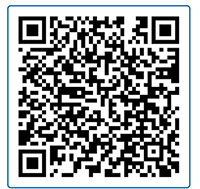Since 2002, ABS SafeCom Trucking Consultants in Ontario have focused on MTO and DOT Safety & Compliance Audits. Our specialists examine the DOT and MTO audits and analyze your safety rating in relation to the transportation sector.
To keep our Ontario clients informed about their situations, we collaborate with them. Additionally, ABS SafeCom provides you with the most recent information on Federal and Provincial compliance that affects your Safety Rating. Customized solutions (that comply with regulations) are provided by ABS SafeCom to help you pass any audit.
ABS SafeCom will assist you with:
- MTO & DOT Audits
- MTO’s Show Cause Meeting
- Safety Action Plans
- C-TPAT or PIP Audit
- IFTA & IRP Audits
Importance of CVOR & DOT Numbers
A Carrier Safety Rating is a public label that is assigned to your trucks. The Registrar of Motor Vehicles or CSA, FMCSA of the US assigns a rating to a carrier based on the company’s safety record. It should be noted that Carrier’s Safety Ratings are available to the public.- Collisions
- Convictions
- Inspections
- Facility Audits
There is information regarding the performance of a carrier that may be found in their safety rating. It is possible for shippers, competitors, insurance companies, and financial institutions to obtain information on a carrier's safety rating and then utilize this knowledge to make judgments that are well-informed. When it comes to potential clients, carriers that have received high safety ratings have the ability to promote themselves, whereas carriers who have received low safety ratings are immediately identifiable.
Get in touch with ABS SafeCom Trucking Consultants in Mississauga if you are experiencing problems with the MTO or the DOT, or if you are interested in increasing the safety ratings of your carrier. We have provided assistance to hundreds of Commercial Motor Vehicle Operators, Carriers, and Drivers in Ontario with virtually every imaginable CVOR-related problem that has been brought before the Ministry of Transportation (Canada) and the Department of Transportation (United States). When an MTO or DOT Internal Facility Audit is being conducted, we offer continuous and comprehensive support.
The following areas will be included in ABS SafeCom’s Internal Facility Audit Review (done before the MTO or US DOT Audit)
- CVOR Analysis and Safety Rating Review
- MCMIS Review
- CSA Administrations SMS Review
- Carrier Policies and Procedures
- Driver, Company Profiles Review
- Preventive Maintenance Policy Review
- Maintenance Profiles Review
- Accident Register Review
- LOG BOOKS Auditing and Reviewing
- Driver Hiring and Orientation Review
- Enforcement Inspections and Violation Files Review & more
How are carriers selected for an audit by DOT?
Compliance review
In-house inspections are an established fact of life for motor carriers. A visit from a Department of Transportation official to conduct a compliance review may be triggered by any number of factors. For example:
- New carriers (or carriers who have never been audited)
- Follow-up to a conditional or unsatisfactory review
- An investigation of a safety-related complaint(s) which are deemed valid and serious enough to warrant a compliance review
- A high-profile or fatal accident
- A request by a motor carrier to audit its operation
The majority of carriers audited are selected from based on a High Risk carrier definition under the Compliance, Safety, Accountability (CSA) enforcement model.
Federal Motor Carrier Safety Administration (FMCSA) adopted a High Risk motor carrier definition. Under the definition, passenger carriers are “High Risk” if they have two or more of the following Behavior Analysis and Safety Improvement Categories (BASICs), most closely correlated with crash risk, at or above the 90th percentile for one month and they have not received onsite investigation (audit) in the previous 12 months: Unsafe Driving, Crash Indicator; HOS Compliance, and Vehicle Maintenance. Non-passenger carriers are considered “High Risk’’ if they have two or more of these BASICs at or above the 90th percentile for two consecutive months and they have not received an onsite investigation in the previous 18 months. This defined High Risk list will be the Agency’s investigative priority. It will allow the Agency to more promptly conduct investigations of carriers that pose the greatest risk to public safety, rather than placing carriers at high crash risk in a longer queue of investigations.










